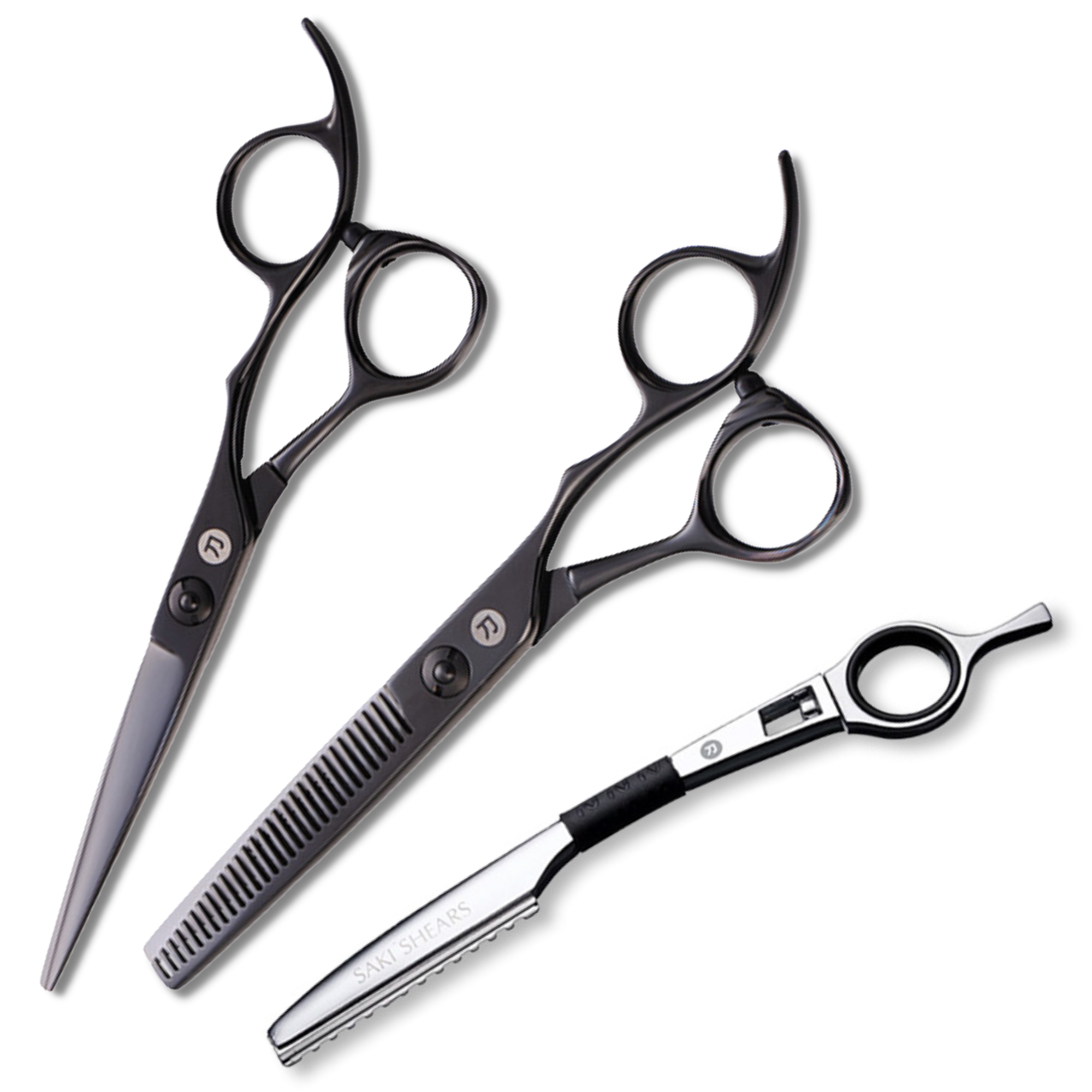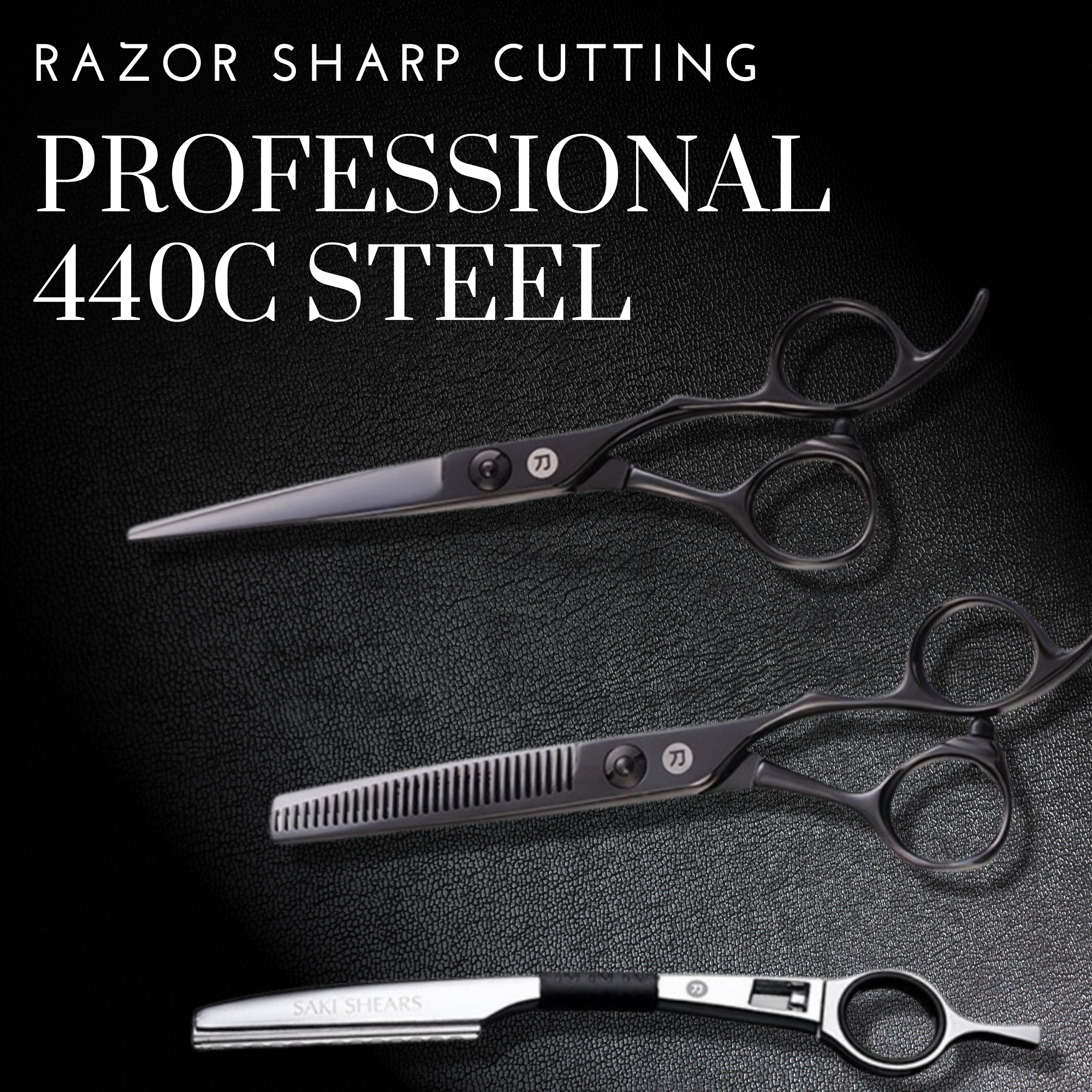Shears in Action: A Deep Dive into Different Hair Cutting Techniques and the Optimal Shears for Each
In the world of hairdressing, precision, creativity, and skill converge to create an array of breathtaking styles. Central to this art form are the hair shears, an extension of the hairdresser's hand, serving as the conductor of their symphony. However, with a myriad of hair cutting techniques, understanding which shears are best suited for each method is paramount. This comprehensive guide explores various hair cutting techniques and the optimal shears for each, providing a deep insight into the dynamic relationship between technique and tool.
Understanding Hair Shears: An Overview
Hair shears are more than just a cutting tool; they are an integral part of a stylist's professional arsenal. The quality, design, and type of shear significantly impact the stylist's work, influencing everything from the precision of their cuts to their hand comfort. Before we explore the specific cutting techniques and their corresponding shears, it's essential to acquaint ourselves with the fundamental types of hair shears.
1. Straight Shears: These are the quintessential hair cutting shears. With two straight blades, they are ideal for executing a wide range of cuts, from blunt cuts to point cutting. They are typically available in various sizes, usually ranging from 4.5 to 7 inches, to cater to different cutting techniques and stylist preferences.
2. Thinning Shears: Distinguished by one serrated blade, thinning shears are designed to remove weight from the hair without altering the overall length. They are invaluable for managing thick or bulky hair, helping to create a more balanced and manageable style.
3. Texturizing Shears: Although similar to thinning shears, texturizing shears feature wider teeth, designed to remove less hair with each cut. They are primarily used to add texture and volume, helping to create dynamic, layered styles.
4. Swivel Shears: These shears feature a swivel joint on the handle, allowing for greater movement and flexibility. This design helps reduce hand fatigue and can be especially beneficial for stylists who spend long hours cutting hair.
Basic Cutting Techniques and the Optimal Shears
Armed with an understanding of the different types of hair shears, we can now explore various cutting techniques and the optimal shears for each.
1. Blunt Cutting: This technique involves cutting the hair straight across, creating a blunt, even edge. It's commonly used for creating precise styles like bobs, bangs, and one-length cuts. For this technique, straight shears are ideal. Their design allows for a high degree of precision, creating clean, straight lines.
2. Point Cutting: Point cutting involves cutting the hair at an angle to create texture and remove bulk. It's often used to soften the edges of a blunt cut or to blend layers. Straight shears are typically used for point cutting. The length and angle of the blades may vary depending on the desired effect, with shorter shears often offering greater precision.
3. Slide Cutting: Slide cutting, also known as slithering, involves sliding the shears down the hair shaft to remove weight and create movement. It requires sharp, smooth shears to ensure clean cuts and prevent hair damage. Longer straight shears are often preferred for slide cutting, as their length allows the shears to glide through the hair more smoothly.
4. Thinning: Thinning involves removing weight from the hair without changing the length. This technique is particularly useful for managing thick or voluminous hair, helping to create a more balanced and manageable style. Thinning shears, with their serrated blades, are the go-to tool for this technique, allowing for the removal of weight without drastically altering the hair's length.
5. Texturizing: Texturizing is a technique used to create volume and movement in the hair. It involves a variety of cutting methods, including point cutting and chipping. Texturizing shears, with their wider teeth, are perfect for this technique, allowing for the creation of pronounced texture and dimension.
Advanced Cutting Techniques and the Optimal Shears
As stylists grow in their craft, they begin to explore more advanced cutting techniques. These methods often require a high level of skill and precision, as well as the right tools.
1. Razor Cutting: This technique uses a razor instead of shears to cut the hair. The razor creates a softer, feathered edge, allowing for a more textured and natural-looking style. This technique requires a specialized razor tool and a high level of skill to execute correctly.
2. Dry Cutting: As the name suggests, this technique involves cutting the hair while it's dry. Unlike wet cutting, dry cutting allows the stylist to see the hair's natural movement and shape, providing a more accurate representation of the final look. Straight shears are typically used for dry cutting, with the length of the shears depending on the stylist's preference and the specific technique being used.
3. Notching: Notching involves cutting into the hair to create texture and movement. It's often used to create a chunky, textured look or to add dimension to layered styles. This technique can be performed with either straight or texturizing shears, depending on the desired effect.
4. Undercutting: Undercutting is a technique used to create a contrast in length between the top and bottom layers of the hair. It's often used to create edgy, modern styles. This technique requires a high degree of precision and can be performed using straight shears.
5. Disconnection: Disconnection involves creating a stark contrast in length between different sections of the hair. This technique is often used to create avant-garde, artistic styles. Straight shears are typically used for disconnection, allowing for precise, clean lines.
| Cutting Technique | Straight Shears | Thinning Shears | Texturizing Shears | Swivel Shears |
|---|---|---|---|---|
| Blunt Cutting | Yes | No | No | Yes |
| Point Cutting | Yes | No | No | Yes |
| Slide Cutting | Yes | No | No | Yes |
| Thinning | No | Yes | No | No |
| Texturizing | No | No | Yes | No |
| Razor Cutting | No | No | No | No |
| Dry Cutting | Yes | No | No | Yes |
| Notching | Yes | No | Yes | Yes |
| Undercutting | Yes | No | No | Yes |
| Disconnection | Yes | No | No | Yes |
Making the Right Choice: Matching Technique with Tool
Understanding the interplay between cutting techniques and shears is crucial for any hairstylist. It's not just about knowing how to execute different techniques; it's about understanding how the right tools can enhance your work, enabling you to bring your creative visions to life.
Whether you're executing a blunt cut with straight shears or adding texture with thinning shears, remember that your shears are an extension of your hand. Choosing the right shears for the job can make the difference between a good cut and a great one. So, take the time to understand your shears, care for them properly, and they will serve you well in your journey towards hairdressing mastery. After all, in the hands of a skilled stylist, a pair of shears is more than just a tool; it's a wand of transformation, turning the ordinary into the extraordinary one cut at a time.
Saki Cisailles Vente








L'ensemble de coupe de cheveux Saki Katana est la paire parfaite! Faits à la main et fabriqués à l'aide d'acier inoxydable japonais et d'un épais revêtement de titane noir, les ciseaux à cheveux Katana Saki et le cisaillement à éclaircir offrent la durabilité ultime pour une paire de ciseaux à cheveux longue durée sur laquelle vous pouvez compter. L'ensemble Saki Katana comprend nos cisailles de coupe de cheveux premium, cisailles à cheveux, rasoir et étui de transport en cuir.
Options:
L'ensemble de 6 "comprend la cisaille Katana 6", la cisaille à éclaircir 6 ", le rasoir pivotant et l'étui en cuir.
L'ensemble de 7 "comprend les cisailles Katana 7", les cisailles à éclaircir 6 ", le rasoir pivotant et un étui en cuir.
Gaki Katana Garantie: Couvert par Saki Shears Garantie à vie
Saki Katana Ciseaux de coupe
Les cisailles à cheveux Saki Katana présentent un bord convexe et une lame en acier inoxydable à triple rodage pour une coupe précise et lisse, tandis que la poignée de grue extra-longue et décalée combat la fatigue et offre le confort ultime. Idéal pour la coupe émoussée, humide et sèche.Caractéristiques:
- Fait à la main pour la précision
- Matériau: Acier inoxydable japonais
- Lame: Lame convexe de style japonais avec la dureté 60-61 HRC
- Taille de bague : Réglable
- Soudé en deux pièces
- Revêtement noir: Revêtement titane
- Épaisseur de revêtement: 1.5 um
- Taille: 6 pouces
Cisailles éclaircies Saki Katana
Saki Katana Thinning Shear est parfait pour éclaircir, mélanger et/ou ajouter de la texture à toute coiffure avec 30 dents et épaisses, courtes lames épée arrière. Offset, poignée de grue extra-longue et taille de bague réglable offre le plus grand confort et soutien tout en style.
Caractéristiques:
- Fait à la main pour la précision
- Matériau: Acier inoxydable japonais
- Lame: Lame convexe de style japonais avec la dureté 60-61 HRC
- Taille de bague : Réglable
- Soudé en deux pièces
- Revêtement noir: Revêtement titane
- Épaisseur de revêtement: 1.5 um
- Taille: 6 pouces/30 dents
Votre Saki Katana Set comprend:
- 1 cisailles à cheveux saki katana faites à la main
- 1 Ciseaux à éclaircissement Saki Katana faits à la main
- 1 rasoir pivotant fait main
- 1 cas
- Garantie à vie
Saki Cisailles Katana ligne de ciseaux à cheveux sont p Pour les maîtres barbiers, les coiffeurs avancés et les coiffeurs professionnels.





